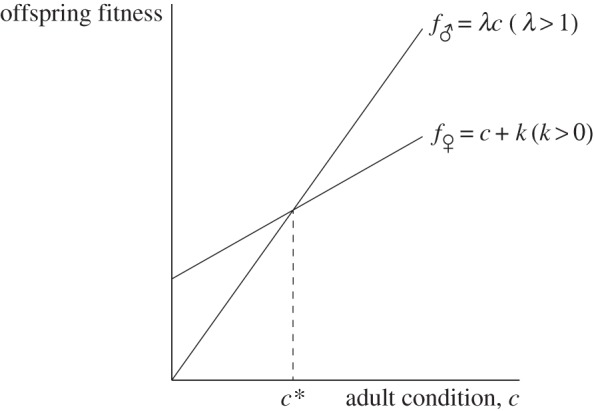Figure 1.

The ‘classic’ Trivers–Willard fitness functions, for which the sex ratio version of the Trivers–Willard hypothesis holds, while the investment version does not. Because male fitness always increases faster with condition than does female fitness, fitness returns to investment in a male offspring are always greater than in a female offspring of the same initial condition, and so a mother with a mixed brood will always invest more in the male of the brood, no matter her own condition.
